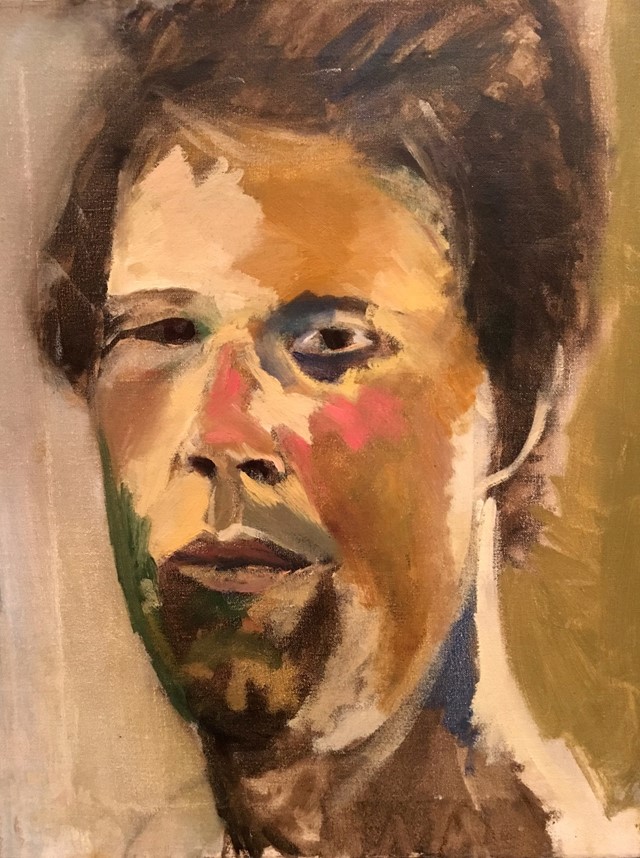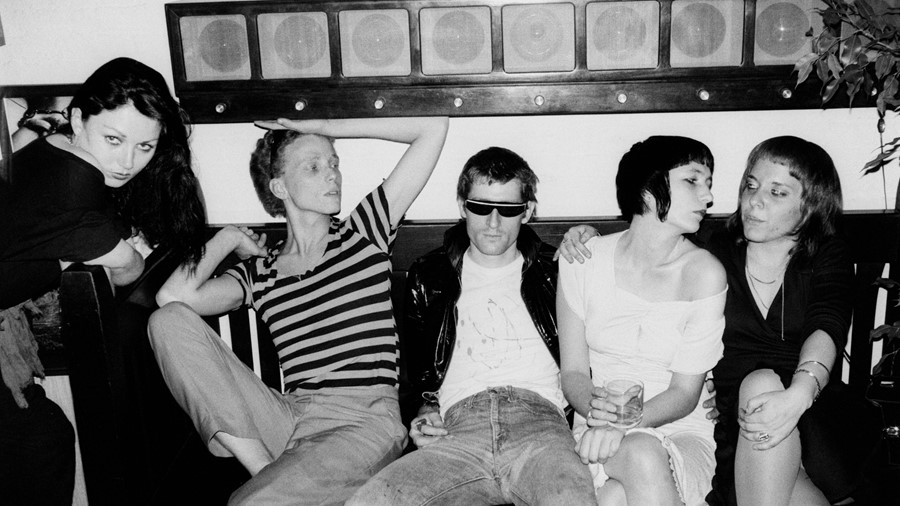New documentary Make Me Famous examines the life and work of Edward Brezinski, a contemporary of Jean-Michel Basquiat who dreamed of being a star – but never made it
Countless artists move to New York from all around the world with a similar dream: to make it; to find fame and fortune. For Edward Brezinski (1954-2007), this was his dream too – but not his fate. Although fortune put him in the right place at the right time, he was the wrong man. The new documentary Make Me Famous tells his story.
“I’ll starve to death before I sell a big painting for $100. I’m not that masochistic,” Brezinski says, his voice dripping with desultory tones as he sits imperiously in a makeshift salon at Magic Gallery, which he ran out of his sixth-floor tenement walk up on East Ninth Street in New York’s fabled East Village.
Located opposite a men’s shelter on an otherwise barren block, Brezinski hosted exhibitions and events to help establish himself as a neo-expressionist painter. But unlike his contemporary Jean-Michel Basquiat, Brezinski was less of an innovator and more of a traditionalist; his work was decidedly out of step with the times and did not reflect the zeitgeist. But his painstaking devotion to his art was wholly real and lies at the heart of this new film, which premieres February 17 at Bertha DocHouse in London and will screen at the ICA.
Featuring a dazzling cast of characters including David McDermott, Duncan Hannah, Kenny Scharf, Richard Hambleton, Marcus Leatherdale, Claudia Summers and Sur Rodney (Sur), the film seamlessly blends brilliant bits of banter, outrageous scandals and remembrance of things past, then tops it off with the question, “Did Edward Brezinski fake his death to drive up the price of his paintings?”
Director Brian Vincent weaves a sparkling tale of ambition and angst taken to sublime extremes as Brezinski slides from the brink into the abyss, doing so with a singular blend of panache and contempt. “Edward came to New York in the 1970s at a time when painting was just like occupational suicide. You weren’t going to sell anything,” says Vincent.
Brezinski was one of a wide coterie of artists, outcasts, and squatters from all walks of life who found a place on the Lower East Side as the neighborhood fell into precipitous decline. Abandoned buildings and empty lots littered once vibrant blocks for miles around, and the few remaining tenements were hardly up to code. It was the perfect setting for the emergence of a radical new art scene set in the East Village.
A new generation of artists decided to write their own rules. At a time when everyone could afford to live and work in walking distance from one another, artists like Tim Greathouse set up storefront galleries, while working and sleeping in the back. Brezinski set up the Magic Gallery in his home, hosting soirees with provocations like Gary Indiana calling out David Wojnarowicz in poetry.
Described as charismatic, exuberant and intense, Brezinski acquired a reputation for passing out paper invitations to a random group show featuring his work at other people’s exhibition openings. Although he was a hustler who couldn’t quite read the room, he soldiered on, convicted by his commitment to his work.

One night Brezinski met a guy named Lenny Kisko one night at The Bar, which has been likened to the Cedar Tavern of the East Village scene. Kisko was making good money working as a waiter at Lincoln Center and started buying Brezinski’s work – going on to becoming his primary collector and preserving works like a hallucinatory painting of Nancy Reagan in her signature blood-red suit.
Despite having Kisko as a patron and agent, Brezinski desired more: a star by any means necessary. Little did he realise, it wouldn’t happen until 16 years after his 2007 death. It all began over a decade ago. While in between acting jobs, Vincent got work as a waiter. Vincent mentioned his obsession with the 80s to a coworker who just happened to be Lenny Kisko – and the die was cast.
“I could relate to Edward’s struggle because I’m an actor and I’ve been in a lot of things over the years, but I’m not famous,” says Vincent. “The thing that kept me going was that I could see how good he was and I wanted to know why he didn’t get famous. I wanted to tell his story and bring out all these other characters of the Lower East Side so we could tell the story of the rise and fall parallel to his career.”
With Make Me Famous, Vincent gives us a layered portrait of a hungry ghost incarnated into a man who was different things to different people. For legendary dominatrix and writer Claudia Summers, whose Brezinski portrait appeared beside his self-portrait at the 2017 Club 57 exhibition at the Museum of Modern Art, Brezinski was “a bird who couldn’t fly”; Painter Duncan Hannah noted his “crazy eye”; while Peter McGough saw his confidence and sadness.

But it is gallerist Annina Nosei who steals the show with a madcap romp replete with broken promises, death threats, payoffs, private parties and museum shows. And despite coming out ahead, Brezinski couldn’t help himself. In an act that would seal his reputation for clownery, he arrived at an opening for Robert Gober at Paula Cooper, approached a pedestal with a sculpture of a bag of doughnuts, took one and ate it. This silent act of disruption quickly escalated to a trip to the emergency room and having his stomach pumped – only to become the thing for which Brezinski was most famous.
Sadly, Brezinski continued to spiral and eventually moved to Berlin, spending his remaining years out of sight and out of mind. His death in obscurity calls to mind the countless artists whose lives and works fall through the cracks of history. With Make Me Famous, Vincent honors Brezinski’s fondest wish and delivers to the public an inspired work of art.
Make Me Famous premieres on February 17 at Bertha DocHouse in London, followed by a Q&A with artists David McDermott and Robert Hawkins. It will also be screening at the ICA.
